Make It Good, and Make It Flexible
An employer will spend about three seconds looking at your resume before deciding to explore further or toss it into a recycling bin. So make it good.
And make it flexible. Increasingly, employers want to see electronic versions of your resume, or have you apply for positions online. So as you create it, make sure it translates to a variety of programs, including Microsoft Word, Adobe Reader and others.
Step One: Decide the format
There are two common types: chronological and functional. Use the one that best highlights your strengths.
Chronological resumes start with your last job and work back through your career. It’s a good resume if your career shows a steady progression of advancement – either in skill sets or positions.
Functional resumes focus on your skill sets and achievements, and are good for careers that span a variety of industries or careers. They can also be good for first-time job seekers, who may have more skills – from a variety of sources -- than experience.
Step Two: Include the basics
Include:
- Contact information: Full name, phone number, temporary and permanent addresses and e-mail address. If you have a job-relevant web site or professional social media account, such as Facebook or LinkedIn, include it. (Do not include personal social media accounts.)
- Education: School, degree, date of completion, honors, and special course work. Include your high school, too.
- Experience: In addition to work history, include relevant non-professional experience, such as internships, extracurricular activities and significant volunteer work.
- Job Skills: Both task-oriented -- such as computer systems and software, shorthand, typing and others – and function-oriented – such as supervisory tasks, research skills, personnel evaluation and management skills.
- Other Categories: If they are relevant, include publications, awards, leadership positions, or other notable achievements.
Step Three: Do it right
Most job-seekers should limit their resumes to one typewritten page. If you’re a mid-career professional, or have extensive awards and achievements, you may want to consider a second page. Either way, keep it brief.
Use bullet points instead of paragraphs for most information, and keep descriptions brief and meaningful.
Use strong action words, such as “created,” “managed,” or “developed” that show you take initiative in the workplace. And let boldface, italics and capitalization help you draw the reader’s eye to critical information.
Check the spelling. Check it again. Have someone else check it. If you can’t cross the Ts and dot the Is correctly on a resume, an employer will presume you can’t do it in the workplace, either.
Step Four: Customize it
Gone are the days when one resume fits all situations. The advantage of modern word-processing is that you can adjust your resume to call attention to experience, achievements or skills that a specific employer will value.
So adjust the resume to meet the employer’s needs. Bold face different aspects that the employer will look for. Delete achievements or skills that have no value to that employer. Add others that might help you sell yourself.
Step Five: Finish it right
Review your resume at arm’s length. Is it too text-heavy? Confusing? Make sure it’s reader friendly.
Then print your resume on good paper, and save a version on a CD or flash drive to take with you. And save it in different formats: word-processing forms that you can work on and adjust; and PDFs that almost any computer can open and view. Some employers prefer to get job applications by e-mail, and you need to make sure they can read it easily.
Mail your resume with an appropriate cover letter and work samples – if available.
Step Six: Follow Up
A few days or a week after you’ve mailed your resume and cover letter, follow up with a phone call. Initially, confirm that the employer received it, and if possible, use the opportunity to stress your key assets. Try, if possible to arrange a personal interview. Make sure the employer knows you’re very interested in the job.
Request Career Coaching Services
We can assist you with writing and enhancing a resume, job search and strategies, interview preparation and practice, and more.

